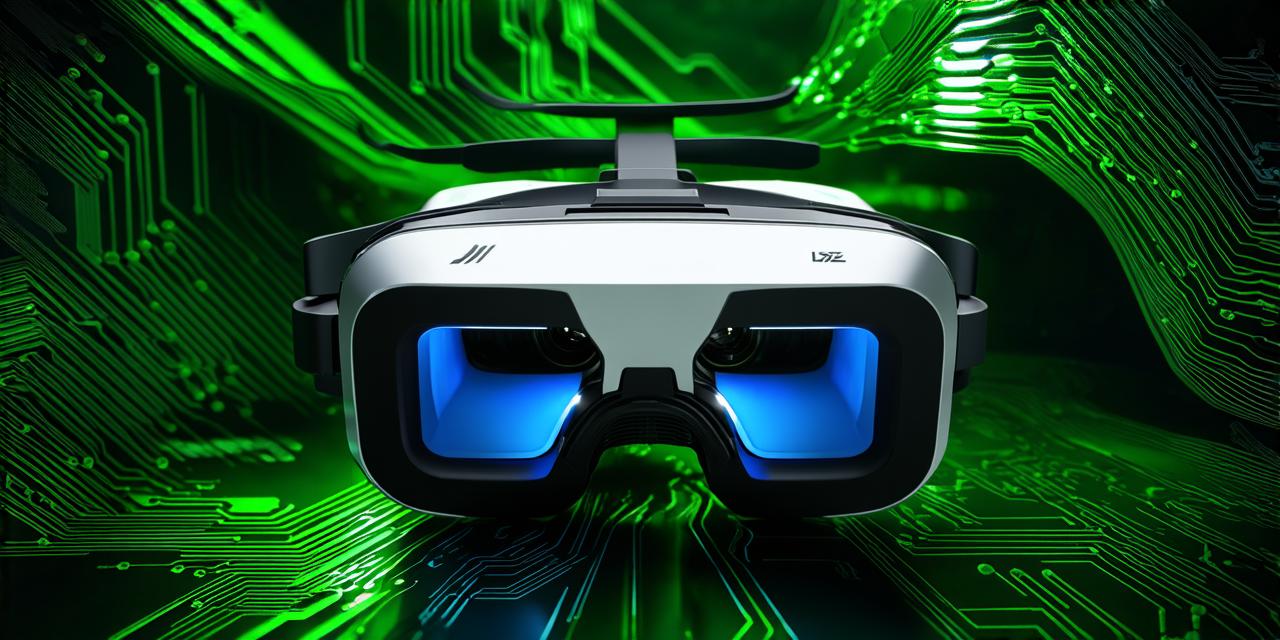Virtual reality (VR) is an immersive technology that allows users to experience digital environments in a 3D manner. With the advancement of VR technology, it’s becoming increasingly popular for various applications, including gaming, education, and healthcare. However, one of the most common questions about VR is what age is appropriate for its use. In this article, we will explore the different factors that determine the suitability of virtual reality for different ages and discuss real-life examples to help AR developers make informed decisions.
Virtual Reality for Children
Children have always been fascinated by technology, and VR is no exception. According to a study published in the Journal of Child Development, children aged between 5 and 12 years old showed significant improvements in memory and cognitive skills after using VR for just one hour. This is because VR provides a unique learning environment that engages children’s senses and stimulates their imagination.
One example of VR being used for educational purposes is the “Anatomy Class” app. This app allows students to explore the human body in 3D, interacting with different organs and systems to gain a better understanding of how they work. The app has been praised for its ability to make learning anatomy more engaging and enjoyable.
Virtual Reality for Adolescents
Adolescence is a time of significant brain development, and VR can be a valuable tool in helping teenagers develop their cognitive and social skills. For example, studies have shown that VR simulations can improve decision-making skills and help adolescents make better choices when faced with complex problems.
One real-life example of VR being used for educational purposes is the “Google Expeditions” app. This app allows students to take virtual field trips to different parts of the world, exploring museums, historical landmarks, and natural wonders in 3D. The app has been praised for its ability to make learning more immersive and engaging, allowing teenagers to gain a better understanding of different cultures and histories.
Virtual Reality for Adults
While VR technology was initially developed for gaming purposes, it has become increasingly popular among adults for various applications, including education, healthcare, and training. For example, VR simulations can be used to train doctors and nurses in performing complex surgeries or to teach soldiers how to react in different combat situations.
One real-life example of VR being used for training purposes is the “Airbus VR Training Academy.” This academy uses VR simulations to train airline pilots how to navigate through different scenarios, such as bad weather or mechanical failures. The academy has been praised for its ability to provide a safe and controlled environment for training, allowing pilots to gain valuable experience without putting themselves or others at risk.
Virtual Reality for Seniors
As seniors age, they may struggle with mobility issues and other health concerns that make it difficult to engage in physical activities. VR technology can be a valuable tool in helping seniors stay active and engaged, both physically and mentally. For example, VR simulations can help seniors improve their balance and coordination or provide a low-impact form of exercise.
One real-life example of VR being used for rehabilitation purposes is the “Virtual Reality Therapy” program developed by the Mayo Clinic. This program uses VR simulations to help patients recover from injuries or surgeries, providing a safe and controlled environment for physical therapy. The program has been praised for its ability to provide personalized care and improve patient outcomes.
Factors Determining Suitability of Virtual Reality
While the above examples illustrate how VR technology can be used across different age groups, there are several factors that determine the suitability of virtual reality for each individual. These include:
- Age: As mentioned earlier, age is an important factor in determining the suitability of VR for different individuals. Children and adolescents may require more guidance and supervision when using VR technology than adults.
- Physical ability: Individuals with mobility issues or other physical limitations may struggle to use VR technology, particularly if it requires significant movement or balance.
- Mental health: Some individuals may experience anxiety or motion sickness when using VR technology, which can impact their overall experience.
- Familiarity with technology: Individuals who are not familiar with technology may struggle to navigate VR simulations, which can be frustrating and discouraging.
FAQs
1. What is the age range for virtual reality?
While there is no specific age range for virtual reality, it’s important to consider individual factors such as age, physical ability, mental health, and familiarity with technology when determining suitability.
2. How can virtual reality be used in education?
Virtual reality can be used in education for a variety of applications, including immersive learning experiences, field trips, and simulations. The “Anatomy Class” app and “Google Expeditions” are just two examples of how VR technology is being used to enhance the learning experience.
3. How can virtual reality be used for training purposes?
Virtual reality simulations can be used to train individuals in a variety of industries, including healthcare, military, and aviation. The “Airbus VR Training Academy” is an example of how VR technology is being used for pilot training.
4. How can virtual reality be used for rehabilitation purposes?
Virtual reality simulations can be used to provide low-impact physical therapy for individuals recovering from injuries or surgeries. The “Virtual Reality Therapy” program developed by the Mayo Clinic is an example of how VR technology is being used for rehabilitation.
Summary

In conclusion, virtual reality technology can be a valuable tool in enhancing the learning experience and improving physical and mental health outcomes for individuals across different age groups. While there are several factors that determine the suitability of virtual reality for each individual, it’s clear that VR technology has immense potential to provide personalized care and improve overall well-being. As AR developers, it’s important to consider these factors when developing VR applications and to ensure that they are accessible and engaging for all users.




